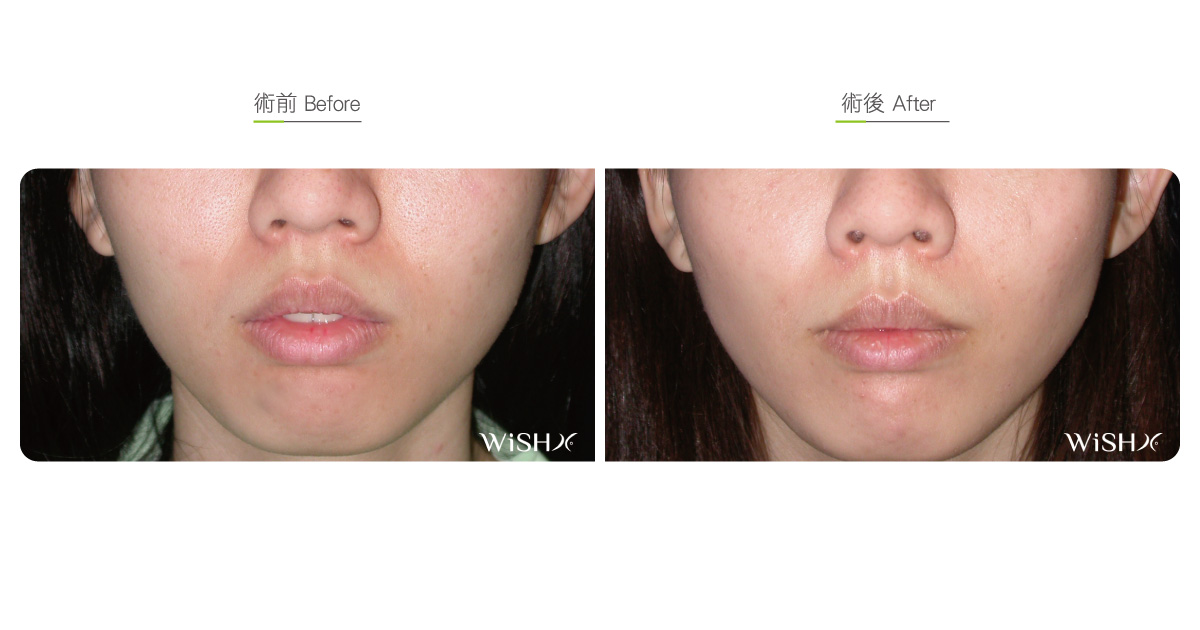Upper Lip Frenectomy (Lip Tie Resection)
The lip tie (frenulum labii superioris) is located at the border of the central bottom inside the upper lip and the alveolar mucosa. It connects the upper lip and incisor and mainly works to stabilize upper lip motion. The frenulum becomes gradually atrophic from infancy to a thin residue in adulthood, and if it does not completely degenerate, it causes the frenulum to become too short or tight, which affects the development of the incisor and results in central gum defects or excess tooth crevice in severe cases or leads to difficulty in closing the upper lip or a language learning disturbance in mild cases. Such problems should be corrected by lip tie resection at an early time to restore the flexible motion and function of the upper lip.
It is frequently seen in clinical practice that adult patients often seek treatment due to poor upper lip closure or incisor tooth exposure, which is only ascertained due to the excessively tightened frenulum after physical examinations. Correction restores the natural appearance and motion of the upper lip. The surgery is conducted by direct excision or Z-plasty of the tightened or hypertrophic frenulum to detach the frenulum lower to the upper alveoli and extend and stitch, thus lowering the stretching and restraint of the frenulum to the inside of the upper lip till the upper lip is able to naturally relax and cover the frontal incisor. There is no absolute limitation on age for performing the surgery, and if the patient feels subjective tightening or constriction of the upper lip motion, surgical correction is considered.
Surgical conditions
Duration
- Type of anesthesia: Local anesthesia
- Type of incision: At the connection between the inner side of the upper lip and the alveolar mucosa
- Recovery: 3–5 days
- Removal of stitches: No
General instructions
No food and water on the day of surgery
- Avoid smoking, alcohol, and irritating foods for 1 month postoperatively, and avoid laughing or singing or other overt mouth opening behaviors.
- Abstain from licking the lips to avoid the recurrence of frenulum tightening in the future.
Ideal candidates
- Patients with a tightened frenulum that affects incisor development or language learning
- Those with a very short frenulum that causes upward stretching of lip and that is unable to cover the incisor
- Those who subjectively feel restricted upper lip motion or difficulty in closing the lip
Possible complications
- Scar contracture
- Incomplate correction
Surgical advantages
-
Surgical results are immediately noted.
-
It improves language disorder due to difficulties in closing the upper lip.
-
It restores the flat upper lip and redresses incisor exposure or other esthetic problems.
-
It avoids compensatory lip hypertrophy derived from intentional upper lip closure.
Surgical drawbacks
-
After lip tie resection, adhesion may recur.
-
It may affect the stability of upper lip motion.
-
The restoration of the upper lip may be insignificant.

